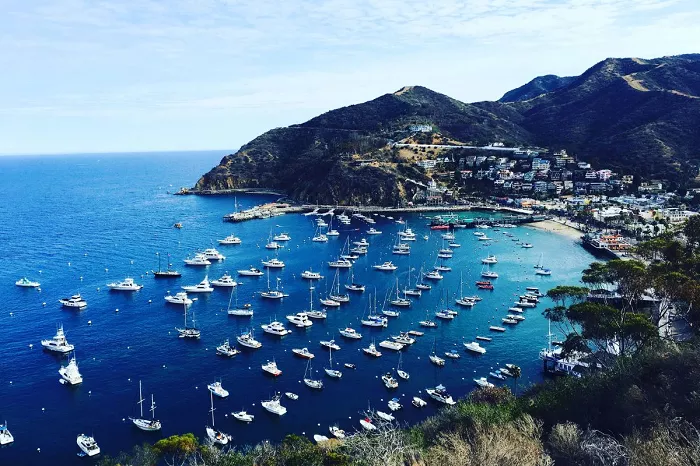Catalina Island, located 22 miles off the coast of Southern California, is a captivating destination known for its rich history, diverse ecosystems, and unique cultural experiences. Whether you’re seeking adventure, relaxation, or a bit of both, Catalina offers a variety of attractions and activities that cater to all interests. This guide will explore the best ways to experience Catalina Island, delving into its geographical features, cultural heritage, economic significance, and ecological diversity.
Geographical Overview
Location and Access
Catalina Island is part of the Channel Islands archipelago and falls under the jurisdiction of Los Angeles County. The island spans approximately 22 miles in length and 8 miles at its widest point. The primary access points to Catalina are through ferry services departing from cities like Long Beach, Dana Point, and Newport Beach. Additionally, the Catalina Airport, known as the “Airport in the Sky,” provides air access for private planes and charter flights.
Topography and Climate
The island’s terrain is characterized by rugged hills, scenic valleys, and pristine beaches. Catalina boasts a Mediterranean climate, with warm, dry summers and mild, wet winters. This climate makes it an ideal year-round destination for outdoor enthusiasts and beachgoers alike.
Best Time to Visit Catalina Island
| Season | Pros | Cons |
|---|---|---|
| Spring (March-May) | Mild weather, wildflowers, fewer crowds | Some tours may not operate |
| Summer (June-August) | Warm water, festivals, long days | Crowded, higher prices |
| Fall (September-November) | Great hiking, fewer tourists | Cooler evenings |
| Winter (December-February) | Cheapest time, peaceful | Some businesses closed |
Best Overall Time: May-June or September-October
- Perfect weather for hiking and water sports.
- Fewer crowds than peak summer.
Cultural Heritage
Historical Significance
Catalina Island has a rich history that dates back over 7,000 years, with the Tongva people being its earliest known inhabitants. The island has since seen various phases of occupation, including Spanish explorers, Mexican governance, and American development. In the early 20th century, William Wrigley Jr., the chewing gum magnate, invested heavily in the island’s infrastructure, transforming it into a popular resort destination. Notably, the Chicago Cubs used Catalina as their spring training location from 1921 to 1951.
Architectural Landmarks
One of the island’s most iconic structures is the Catalina Casino, built in 1929. Despite its name, the Casino has never been a gambling establishment. Instead, it serves as a cultural hub, housing a movie theater and a grand ballroom. The building’s Art Deco and Mediterranean Revival architecture make it a must-see for visitors.
Economic Aspects
Tourism Industry
Tourism is the backbone of Catalina’s economy. The island attracts visitors with its array of recreational activities, including snorkeling, scuba diving, hiking, and zip-lining. The town of Avalon, the island’s main hub, offers various accommodations, dining options, and shopping experiences. Additionally, events like the Catalina Film Festival and the JazzTrax Festival draw significant crowds, boosting the local economy.
Local Businesses and Services
Beyond tourism, Catalina supports a range of local businesses, from art galleries and souvenir shops to guided tour companies and water sports rentals. These enterprises not only cater to tourists but also provide employment opportunities for the island’s residents.
Ecological Diversity
Unique Flora and Fauna
Catalina Island is home to over 60 endemic species, meaning they are found nowhere else in the world. Notable among these is the Catalina Island fox, a small mammal that has made a remarkable recovery from near extinction. The island’s diverse habitats support a variety of wildlife, including bald eagles, seabirds, and marine mammals.
Conservation Efforts
The Catalina Island Conservancy plays a pivotal role in preserving the island’s natural beauty. Established in 1972, the Conservancy manages approximately 88% of the island’s land. Their initiatives focus on habitat restoration, invasive species removal, and environmental education. For instance, efforts have been made to control the population of non-native bison, introduced in the 1920s, to protect native plant species.
Best Way to See Catalina Island
1. For First-Time Visitors:
- Take the Catalina Express ferry to Avalon.
- Rent a golf cart to explore the town.
- Visit the Casino Building and Descanso Beach Club.
- Try snorkeling at Lover’s Cove.
2. For Adventure Seekers:
- Hike part of the Trans-Catalina Trail.
- Book a bison expedition jeep tour.
- Go kayaking or scuba diving.
3. For Luxury Travelers:
- Stay at The Inn on Mt. Ada.
- Take a helicopter tour for stunning views.
- Enjoy a private yacht charter.
Conclusion
Catalina Island is a multifaceted destination that offers something for every traveler. From its rich cultural history and economic vitality to its ecological wonders, the island provides a unique and enriching experience. By engaging with its diverse offerings, visitors can truly appreciate the best that Catalina has to offer.

